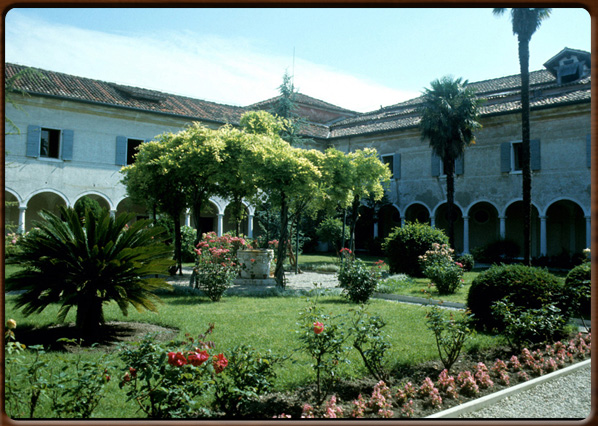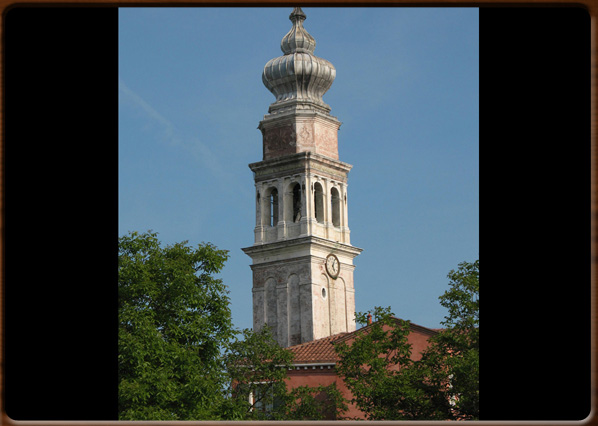
Monastry cloister in San Lazzaro.

Monastry's tower bell.


No video
The first contacts between Catholic Armenians and Venetians go back to the dawn of the lagoon city, in the second half of the 6th Century. It seems that the Armenian Nerses, Byzantine Exarch of Ravenna, had had the church of San Geminiano built in Venice, while the construction of the first cathedral of Torcello is attributed to the Exarch Isaac, also from Armenia.
In the centuries that followed this relationship grew stronger, especially during the period of the Armenian kingdom of Cilicia, in the south of modern Turkey, which granted special privileges to Venetian merchants.
With the intensification of trade, several Armenians settled in Venice. To begin with, the Venetian Republic granted them the right to live in a big house leased from the family of Pietro Ziani, then Doge of Venice.
In the 15th Century, the church of Santa Croce was built in a street that became known as "Calle degli Armeni". This is the only mediaeval church in Italy where services are still held in accordance with the Armenian Rite. At the end of the 16th Century an Armenian cemetery was also built on the island of San Giorgio.
The Armenian community started to decline in the 1600s and early 1700s until the Armenian monk Mechitar (Manug di Pietro) and others arrived in Venice in 1715, fleeing from persecution in Turkey.
The Venetian Republic welcomed the monk and granted him permission to settle on the Island of San Lazzaro, a small isle in a terrible state of neglect, once a leper colony.
Father Mechitar turned the island into a refuge for Armenian exiles, setting up the Community of Armenian Mechitarist Fathers.
The island was cleaned, its soil tilled and cultivated and the old buildings restored. A new monastery was built and the adjacent church of San Lazzaro restored (first founded in 1180).
In 1740 a great library completed the complex: since then the greatest collection of important works in the Armenian culture.
In 1789 a printing-shop opened on San Lazzaro, still going strong today, producing works in some 36 different languages.
400 - 1000 - - rev. 0.1.7